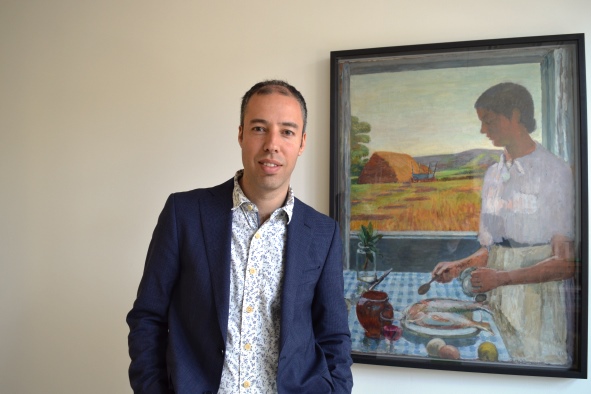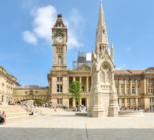Let’s start with some significant positives. The news for Arts Council England and its work with regional museums across England was vastly better than expected. A small cash rise over four years means only a modest decline in real terms, and we had been modelling cuts of 25 to 40%.
The result is that the Arts Council has been able to confirm quickly that budgets for Major Partner Museums, as well as National Portfolio Organisations, will remain unchanged for the next two years. This is a huge boost to many regional museums, as I know from the calls and emails I’ve received since then. It also means we’ll be able to provide funding and support to numerous other museums through strategic funds. Budgets for Museum Development are therefore likely to remain unchanged to 2018, and we can also confirm that another round of the Museum Resilience fund will open in January.
And there were other positive announcements. Arts Council had been advocating for a new tax credit on exhibitions, and a Treasury consultation to consider the idea has been agreed. The proposal is modelled on other tax credits such as that applied to the theatre industry in recent years. The idea is that museums and galleries will be able to claim back a proportion of the money they spend on static or touring exhibitions, providing a significant boost to this vital means of telling stories and engaging audiences. The consultation will begin almost immediately, and with lots of support from the sector I’m very optimistic that it will go ahead.
There was good news for the national museums, with a similar settlement to that for the Arts Council supplemented by confirmation of freedoms that will allow them to manage their business more effectively, and other benefits such as a huge investment in new storage. Individual regional museums also did well – Manchester, for example, receiving £5m towards a new partnership gallery and exhibition space to be developed with the British Museum. And the Great Exhibition in the North will provide new major exhibitions at a number of northern cities, though the details are still being developed.
But there was also less positive news, particularly in terms of a 29%, or £6.1 billion, cut to the Department of Community and Local Government by 2020. This is hugely significant because Local Authorities are a significant source of funding for 40% of regional museums. Many of these museums have already seen large reductions in their funding, and the new cuts will increase this pressure in the coming years.
As the Spending Review details were announced, the Arts Council and other organisations were involved in advocating for museums, libraries and arts organisations in Lancashire that currently are facing a proposal for large reductions in their funding. If the cuts are implemented as currently set out, they’ll involve the closure of two Designated Collections among other important museums and other cultural and community facilities. And there are other examples.
The obvious implication of this mixed news is that the sector needs to unite to support local authority (civic) museums. Civic museums are a vital part of our cultural infrastructure. They tell stories about place, and connections to the world, that are only becoming more important. They are changing their offer and financial model to meet the demands of the current economic climate, but as a recent report by TBR for the Arts Council showed, this takes time. Only a partnership between local authorities, the Arts Council, HLF and other stakeholders like the national museums can give civic museums the best possible chance to prosper.
Let me give a few examples of what that means in practice. First, effective advocacy that builds on what was achieved in the Spending Review. The Arts Council met the chief executive of Lancashire County Council on the day of the announcement about possible cuts. And we’ve since been talking to other stakeholders like HLF and Historic England. This doesn’t mean we will always get the answers we want, but strong relationships with local authorities across the country put us in the right place to influence positively.
Second, it means that funding strategies for organisations like the Arts Council and the Heritage Lottery fund have to adapt to take account of the particular challenges facing civic museums. This will include thinking more about the importance of place, and taking into account regional and national differences in provision and opportunity.
And there is, perhaps, a particular responsibility for national museums. They have done well in the Spending Review, with core budgets protected by Treasury. They still face challenges but they also have massive opportunities, with their brand, collections and location meaning that they will be able to continue to grow income in the coming years. Their national status and national funding brings a national responsibility, and that responsibility is even more acute in the face of the cuts facing civic museums and galleries.
I visited the National Portrait Gallery’s exhibition of Audrey Hepburn portraits at the Wilson Gallery and Museum in Cheltenham last week. Visitor numbers were up, and staff were visibly buoyed by the impact of the exhibition. And the British Museum’s new South Asian partnership gallery with Manchester is an excellent model that builds the long-term potential of a regional museum.
But I am particularly impressed that Tate are specifically reviewing their partnership plans to ensure they are fit to meet the needs of the regional visual arts sector in the context of the current economic challenge. Nicholas Serota was an especially strong advocate for regional museums and galleries in the build up to the Spending Review, and this strategic level of support is what is needed from all national museums in the coming years.
So, a period of relief post-Spending Review. But also a growing realisation that now is the time for all of us to roll up our sleeves and address the considerable challenges facing the sector, and particularly our civic museums; the Arts Council is committed to playing a central role in this work.











